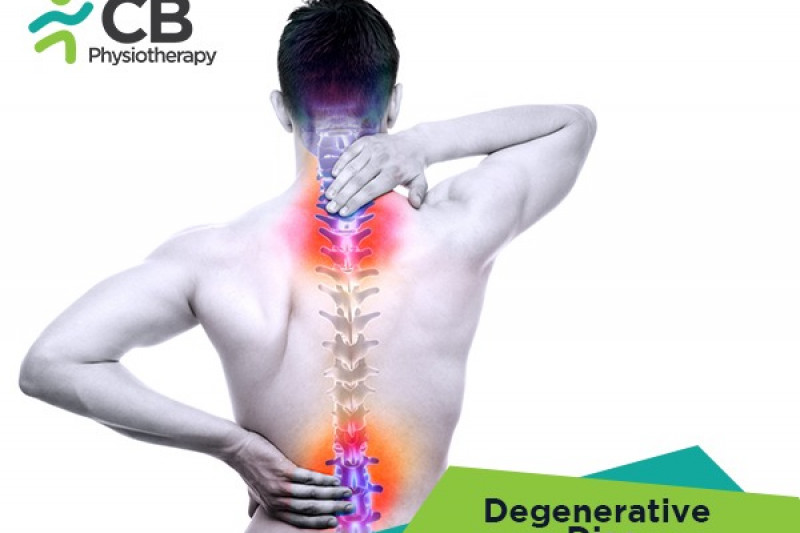
Degenerative disc disease refers to back or neck pain caused by wear and tear in a spinal disc. The pain can be chronic low-level with intermittent episodes of more severe pain. Disc degeneration occurs commonly in the cervical spine and lumbar spine due to vigorous movements and stresses.
Symptoms mostly get worse with older age. Discomfort can be mild to severe and can be disabling. Symptoms vary from person to person and may include:
Degenerative disc disease usually develops with aging and other causes may be:
Pathology
Degenerative disc occurs usually with age when the discs lose water content, which results in shrinkage and reduced sponginess, which alters the strength and shape of one or more discs. This means the vertebrae become closer and can hinder movement or can cause pain. The nerves can also become compressed or pinched, causing less shock absorption while walking, running, or jumping.
Examination of Muscle strength, Pain with motion or in response to touch, and Nerve function is done.
Other diagnostic tests are:
Imaging scans:
Imaging scans like CT or MRI can give information about the spinal nerves, discs, and the aligned.
Discogram:
A discogram involves injecting a dye into the soft center of the disc, to check whether the disc is painful. Discogram usage maybe though controversial as herniated discs do not always cause symptoms.
Physical therapy is recommended to help relieve pain and maintain healthy mobility in the spine.
Cold therapy, also known as cryotherapy, slows circulation, helps to reduce inflammation, muscle spasm, and pain.
Heat therapy is also known as thermotherapy, helps to increase blood flow bringing more oxygen and nutrients to the area. Blood also removes toxic substances which are created by muscle spasms, thus helping in the process of healing.
Ultrasound therapy uses sound waves to treat degenerative disc problems. It is most commonly used to relieve pain and muscle spasms.
Transcutaneous electrical stimulations (TENS) relieve pain, improve function and mobility.
Laser therapy provides a decrease in pain, inflammation and accelerates tissue healing.
This technique stretches the back, traction works to alleviate pain and relieve the pinched nerve. It can be given manually or mechanically.
Massage therapy.
Massage is given to decrease spasms and muscle tension that occurs due to stress. Direct pressure and friction are used to release the tension in the soft tissues like muscles, tendons, and ligaments.
Stretching exercises
Stretching exercises are recommended for muscles of the low back, hips, and pelvis. As tightness in the muscles places pressure on the spine and results in low back pain.
Strengthening exercises are recommended to the lower back and abdominal muscles, which help to maintain healthy postures and support the spine in a proper way. Strengthening exercise programs might include pilates, dynamic lumbar stabilization, etc.
Low-impact aerobic exercise
Aerobic exercises with low intensity elevate the heart rate to improve circulation, deliver nutrients and increase the oxygen supply to the parts of the body examples include stationary bike, aquatic exercises, walking, swimming and water aerobics, stationary biking, and running.
The patient is educated about their condition and advised not to attain a prolonged bending and standing position. The patient should avoid jerky and twisting movements.
Select your City to find & connect with our experts regarding Physiotherapy for Degenerative Disc Disease